Some folks could swear they’ve seen beautiful blue cardinals in their backyards or along hiking trails in certain regions of the United States. But you’ve likely never heard of such a thing. So, how could this be? It seems possible. Why not? Other blue-colored birds exist. And with all the many bird families and species out there, might not there be one you’re unfamiliar with?
Let’s take a look at this nearing legendary creature to learn the truth. Do blue cardinals exist?
Quick Answer
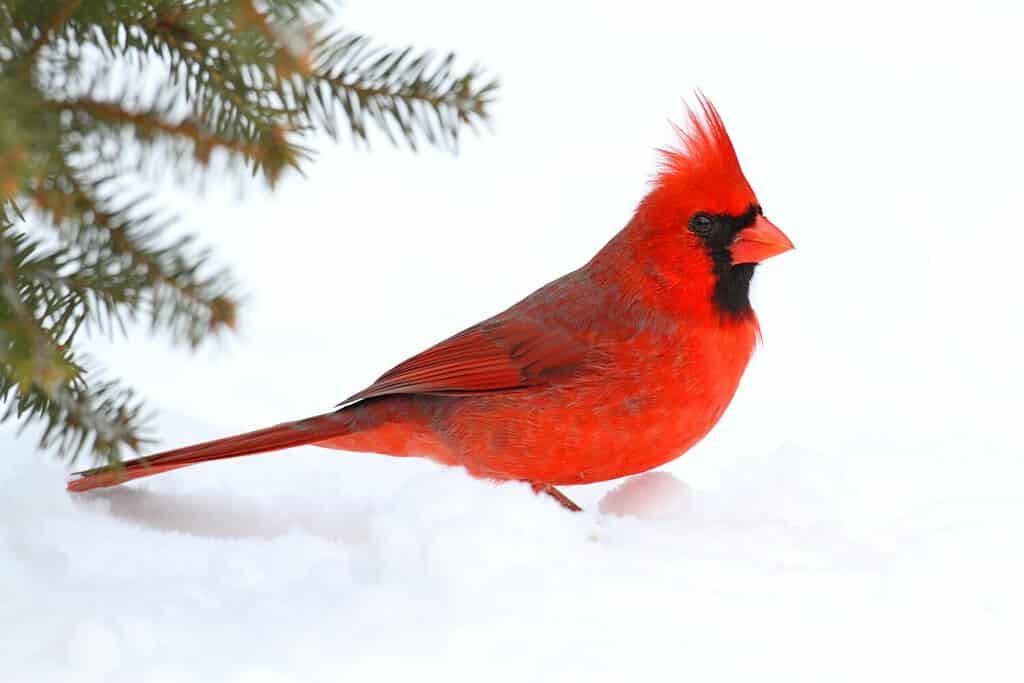
The bold, beautiful cardinal comes in a bright red, sadly, never blue.
©Steve Byland/Shutterstock.com
Sad to say, but blue cardinals are a myth, at least as far as science has so far discovered. People mistake blue-colored birds for cardinals because light plays tricks on their eyes or something else is going on. No known species of blue cardinal exists anywhere in the world.
Reasons You Might Think You’ve Seen a Blue Cardinal
Several reasons exist for thinking you’ve seen a blue cardinal.
- Other birds have a similar crown as red cardinals and come in blue.
- Other species have similarly shaped beaks.
- Some species of bird are about the same size and shape and could be mistakenly identified as cardinals.
- Sometimes, natural or artificial lights may play tricks on our eyes, convincing us a red cardinal is actually blue.
- Other birds may also have similar face markings.
What You Likely Have Seen Instead
Lots of birds look a bit alike, so folks easily mistake one blue bird for another. Or, in this case, one blue bird for a non-existent one. The following are the birds commonly mistaken for the mythical blue cardinal in the United States.
Blue Jay (Cyanocitta)

Some people mistake the blue jay for a blue cardinal. Their similar body shapes and face markings make sense. But they’re not related.
©David Menke, Public domain, via Wikimedia Commons – License
Blue jays are perhaps the most commonly mistaken for cardinals. They have a slightly larger body but similar shape. These gorgeous birds also have a large head crown. Both species also love backyard feeders, but they are not related to each other.
Blue Grosbeak (Passerina caerulea)
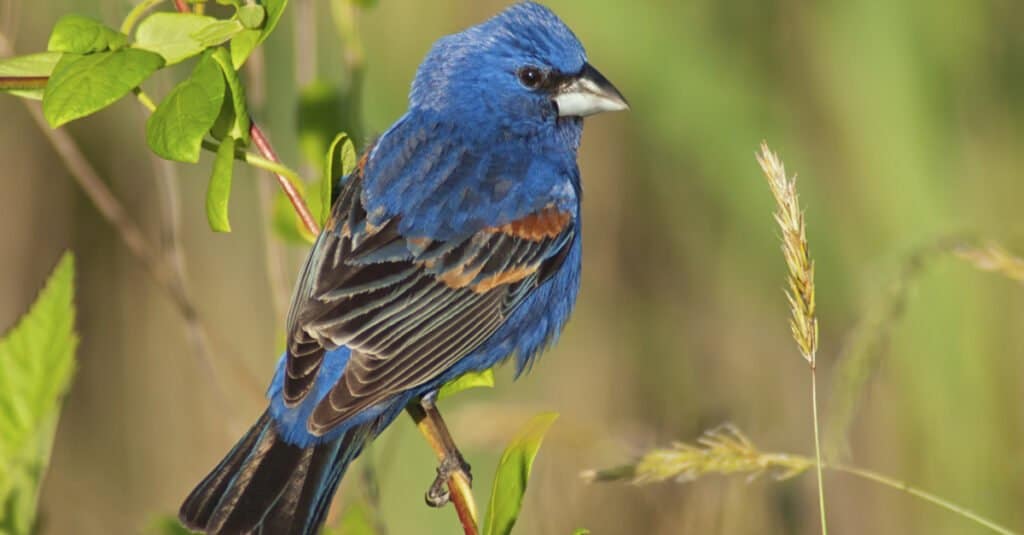
Not surprisingly, some folks have mistaken the gorgeous
blue grosbeak
, a fellow songbird, for a weirdly colored cardinal. When you look at the birds sitting still, you can certainly understand why.
©Michael G. Mill/Shutterstock.com
Medium-sized songbirds that are sometimes mistaken as blue cardinals, blue grosbeaks are actually related to cardinals. Alas, they are a different species, though. They have smaller crests on their heads but do have large, seed-cracking beaks like cardinals and small black eye masks. Their wing bars sometimes appear reddish out of the corner of the eye.
Indigo Bunting (Passerina cyanea)
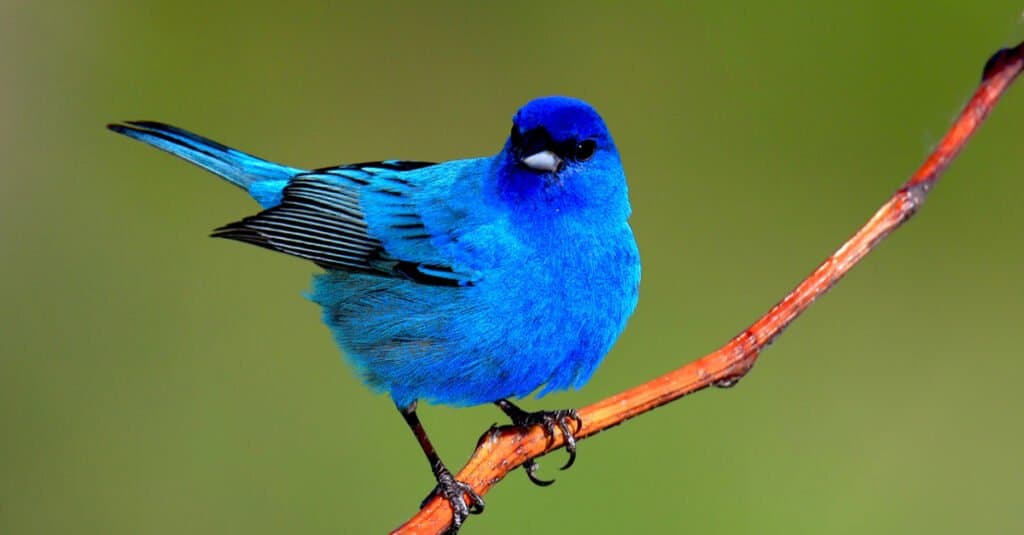
Not everyone sees cardinals in person, so they might easily mistake an indigo bunting for a blue cardinal.
©John L. Absher/Shutterstock.com
Another fun species you might spot and mistake for a blue cardinal, the indigo bunting shows off shimmery blue wings and body along hiking trails. The beautiful bird also has a triangular crown on its head, and a round, plump body. Their beaks are shorter, thinner, and pointer than a cardinal’s though. They rarely make it to backyards for a snack, though, and are a few inches smaller.
Tufted Titmouse (Baeolophus bicolor)

With blue-ish gray coloration and the beautiful head crest, it’s no wonder some people mistake the tufted titmouse for a blue cardinal.
©Rich Waite/Shutterstock.com
Small songbirds, the tufted titmouse have a gray color that sometimes is mistaken for blue. The head crest and black forehead also help this accidental identification. They also visit birdfeeders and reside in the eastern half of the United States.
Desert Cardinal (Pyrrhuloxia)
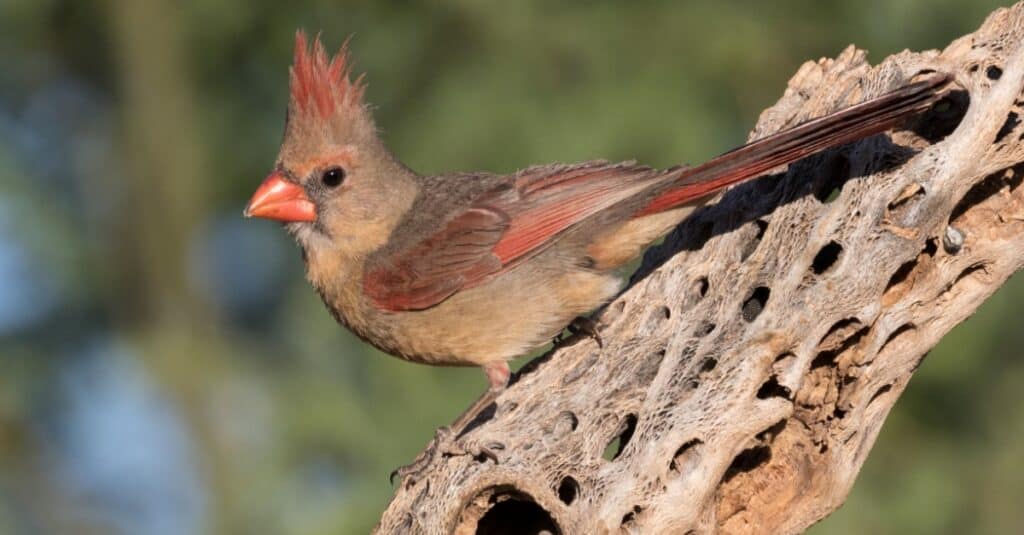
The desert cardinal is mostly gray with red markings, while the
northern cardinal
is mostly red with dark markings. In the right light, either bird could be mistaken for a blue cardinal.
©iStock.com/Dee Carpenter Photography
Known as the desert cardinal, the Pyrrhuloxia is a medium-sized crested bird. They come in shades of gray that could be mistaken for blue. Their red accents may also allude to the female northern cardinal. These birds live in the southwestern United States and Mexico where deserts fulfill their habitat needs.
These birds are part of the same family but they are not the same species. Desert cardinals bear several similarities to northern cardinals, though. Differences, apart from the terrain and gray coloring, also include a slightly turned downward beak and leaner bodies.
Stellar’s Jay (Cyanocitta stelleri)

The stellar’s jay could easily be mistaken for a cardinal with unusual coloring. Many other species come in wild variations, so why not?
©Nigel Jarvis/Shutterstock.com
A likely candidate for mistaken identity might be the Stellar’s Jay, a beautiful bird with a thick, tall crown on its head. The Stellar Jay lives in the western part of the United States while cardinals make their home in the eastern half of the country. Still, folks might catch a glimpse of these beauties and think it’s possible they’re blue cardinals.
Stellar’s jays have long, thin beaks and slender bodies, while cardinals are plumper and rounder. Both birds do like backyard feeders, though.
Florida Scrub Jay (Aphelocoma coerulescens)
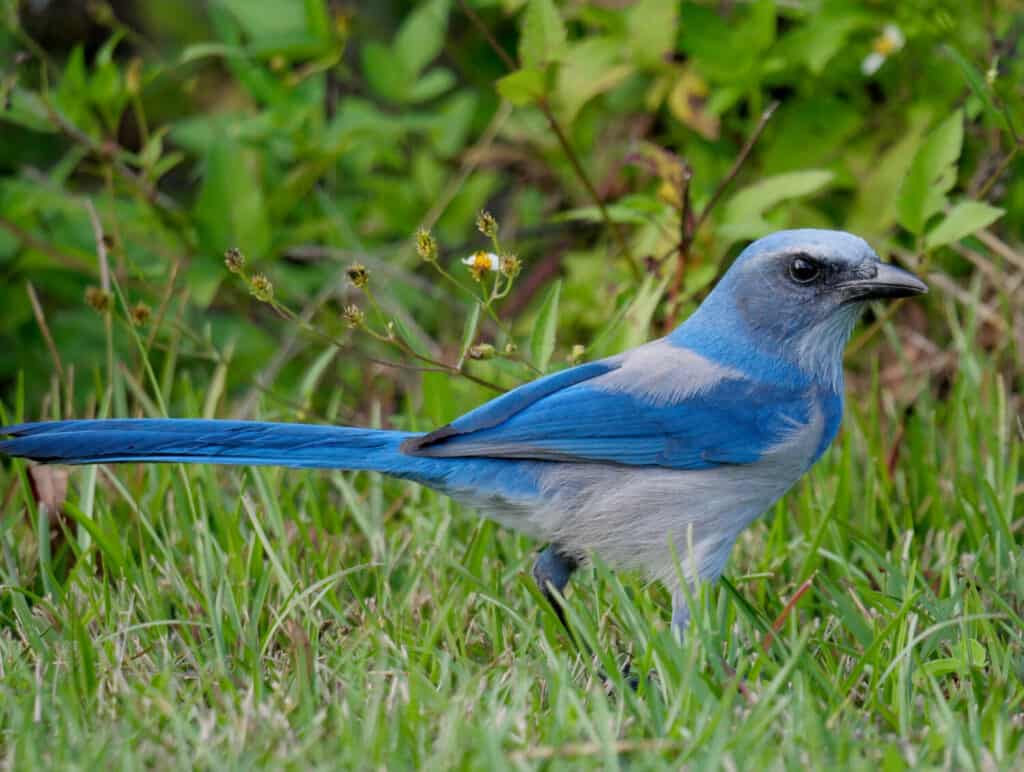
Florida scrub jay may occasionally find themselves mistaken for blue cardinals. The birds have little in common, though.
©Archaeopteryx Tours/Shutterstock.com
The final American bird that might be mistaken for a blue cardinal is the Florida scrub jay. These beautiful birds don’t have crowns but they bear a resemblance to cardinals nonetheless. Their bodies are similar in shape and the way both species hold themselves align. But Florida scrub jays are much smaller than cardinals and have long, thin beaks. Scrub jays aren’t all that common at backyard feeders, either, though they make the occasional appearance.
Are There Any Non-Red Cardinals?
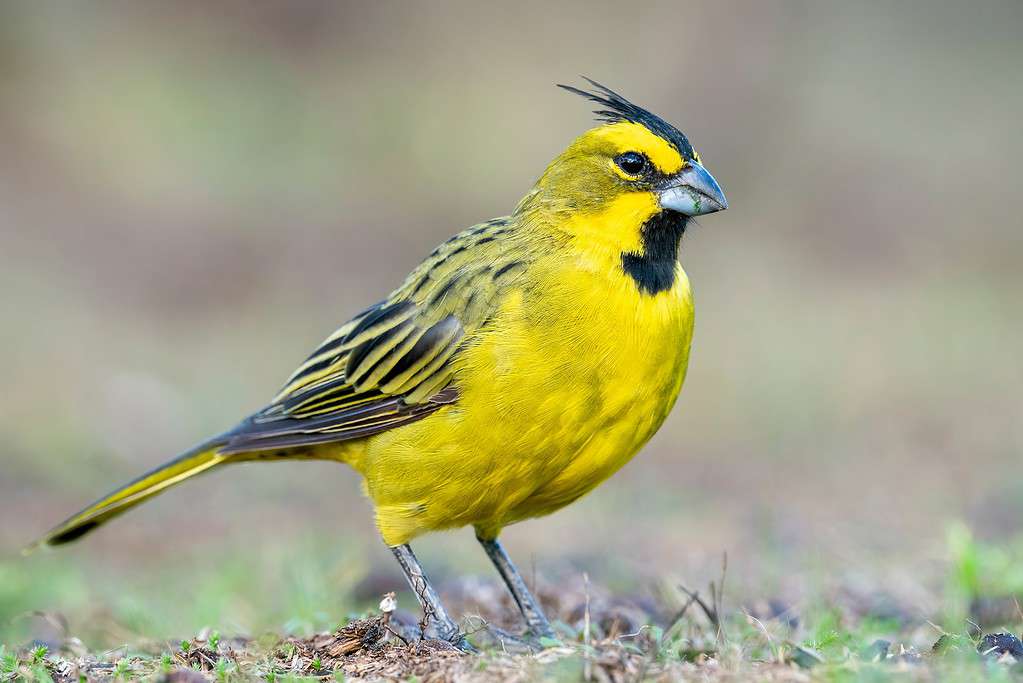
Yellow and white cardinals exist in very rare circumstances. But, sadly, no blue cardinals exist.
©Rob Jansen/Shutterstock.com
While there aren’t any blue cardinals, there are a couple of rare colors you might spot. Most commonly, you’ll see male cardinals with bold red plumage that stands out anywhere they go. Females have muted brown to gray coloration, often with orange to red tinges.
Rarely, a yellow northern cardinal may emerge, due to a genetic variation. Even rarer, you might spot a cardinal with the condition leucism, which means the bird comes in white.
Where Do Northern Cardinals Come From?
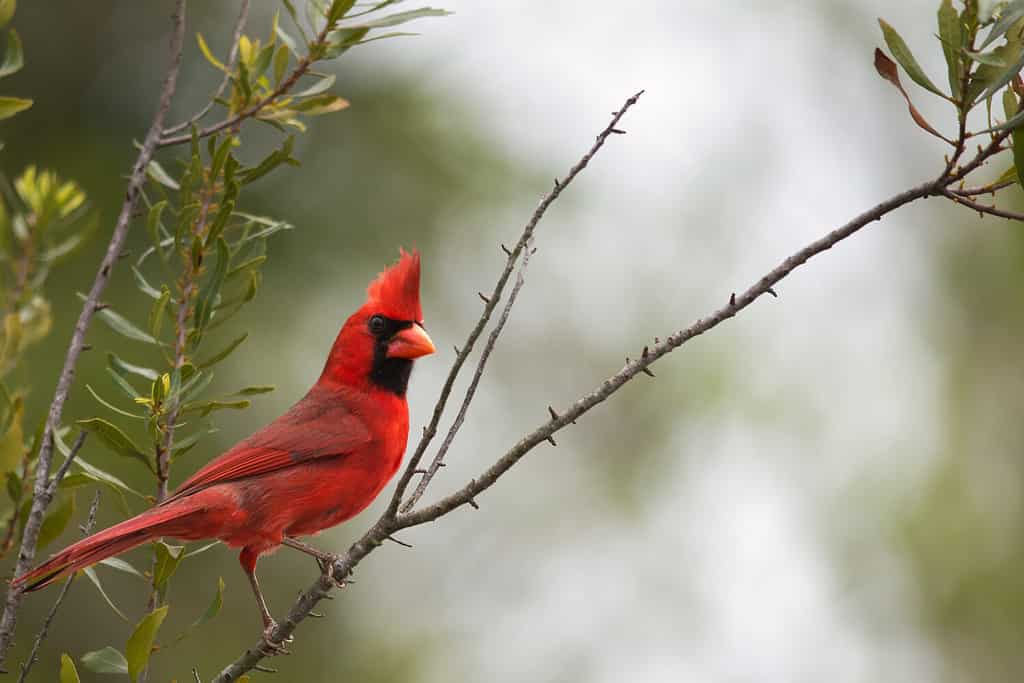
The northern cardinal lives in most of the eastern half of the United States.
©David Spates/Shutterstock.com
The northern cardinal, or standard red cardinal, has been named the official state bird in seven United States:
- Ohio
- Indiana
- Illinois
- North Carolina
- Kentucky
- Virginia
- West Virginia
You’ll also spot these beautiful birds in practically any state in the eastern half of the United States.
The photo featured at the top of this post is © Nigel Jarvis/Shutterstock.com
Thank you for reading! Have some feedback for us? Contact the AZ Animals editorial team.






